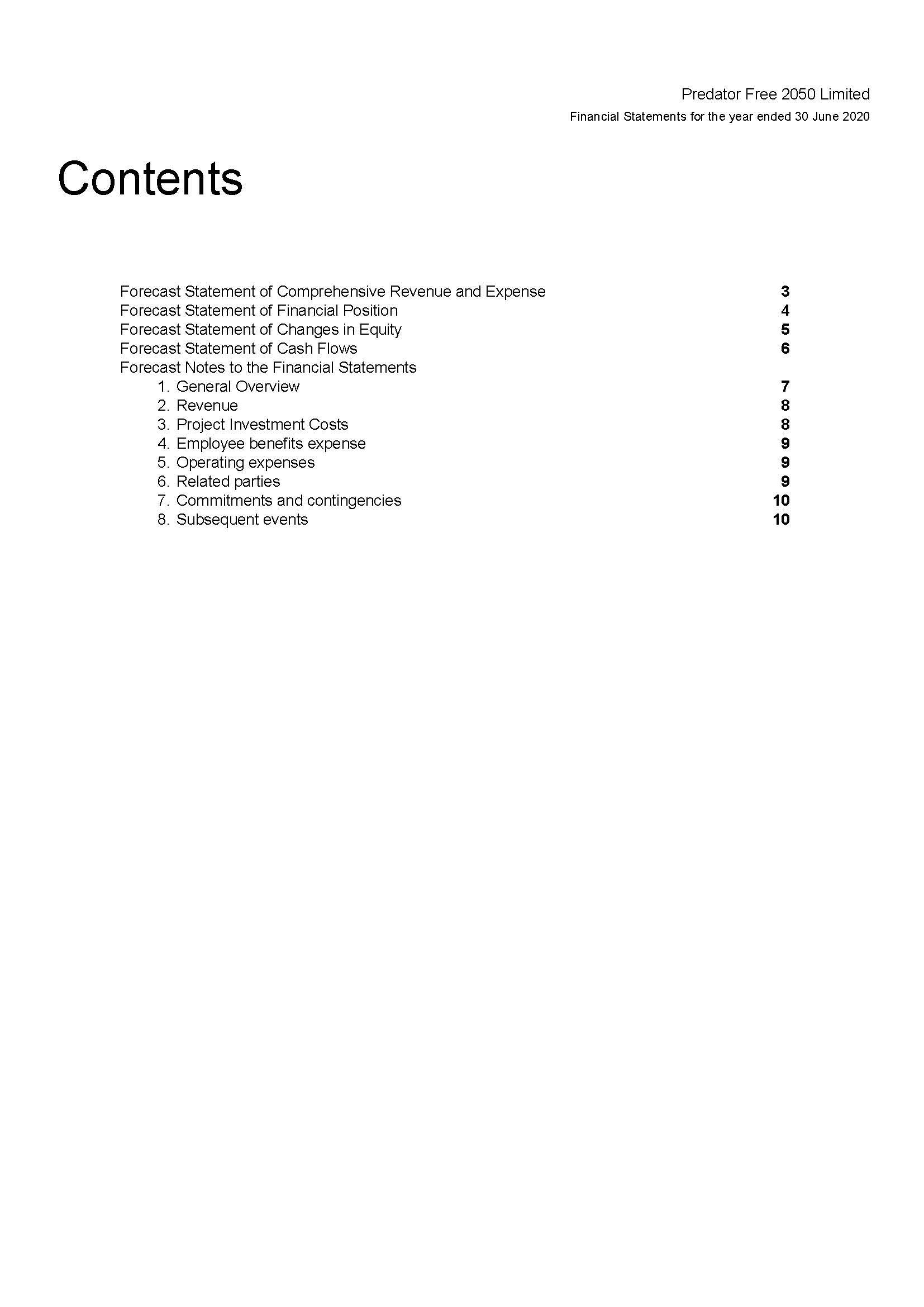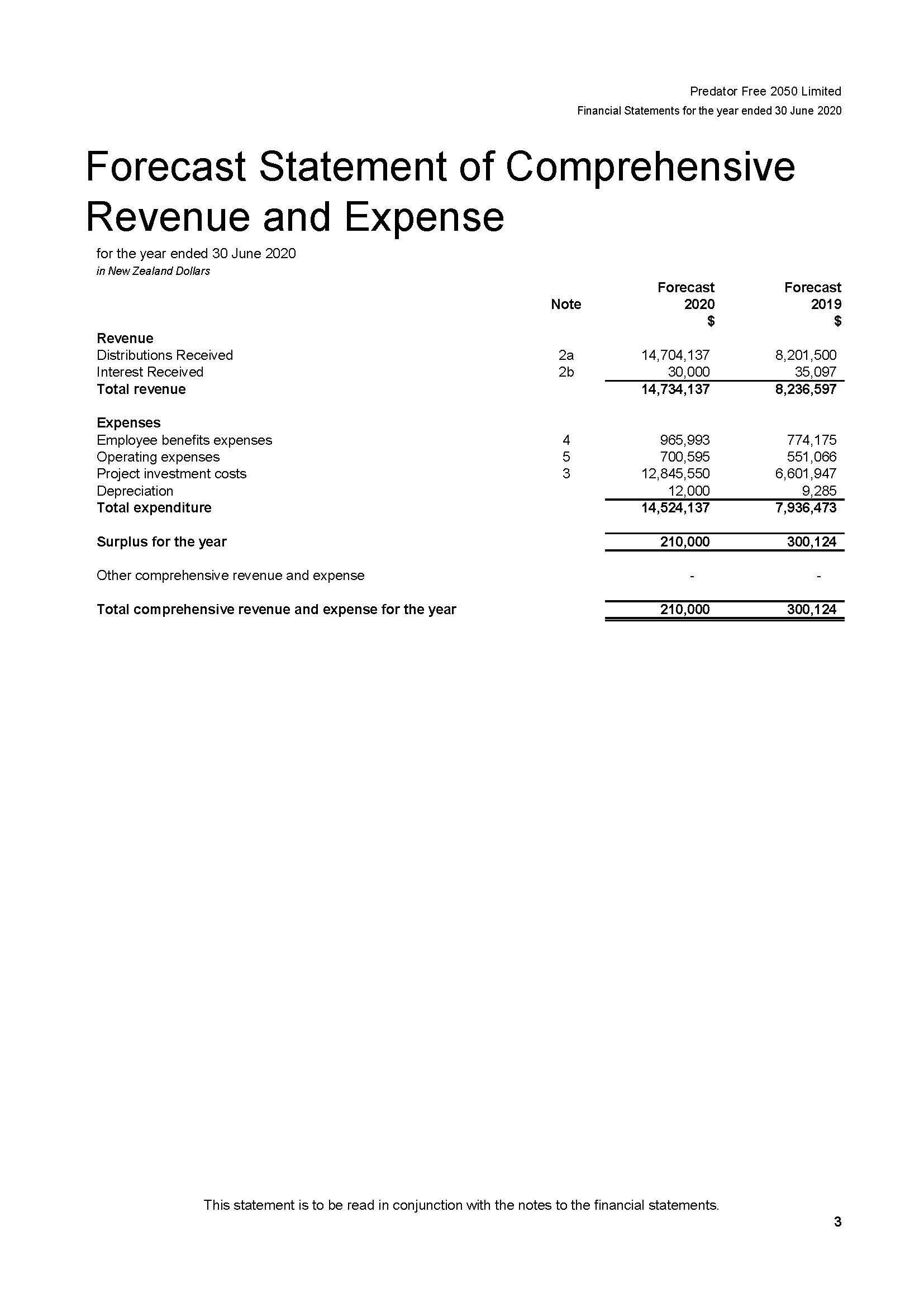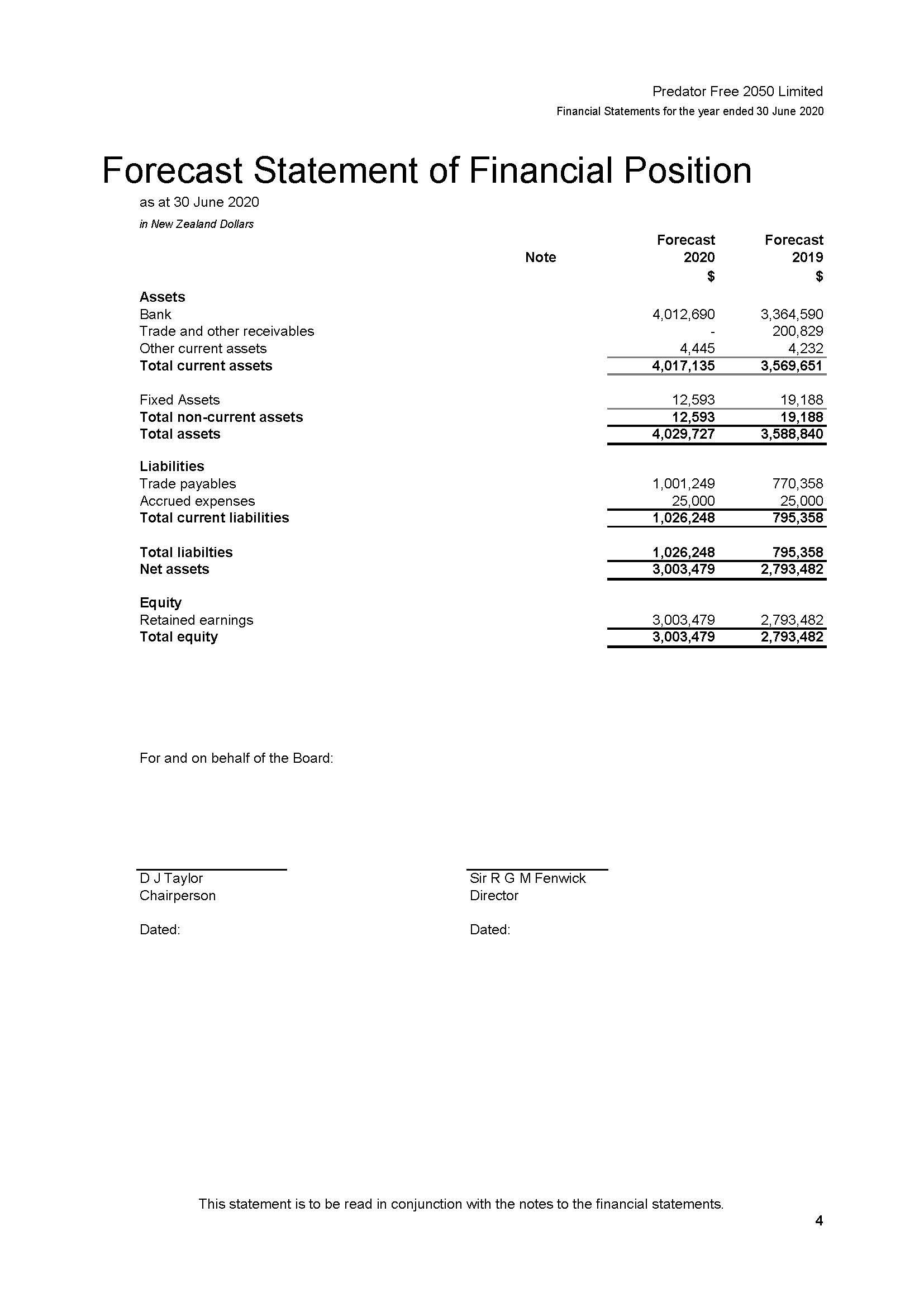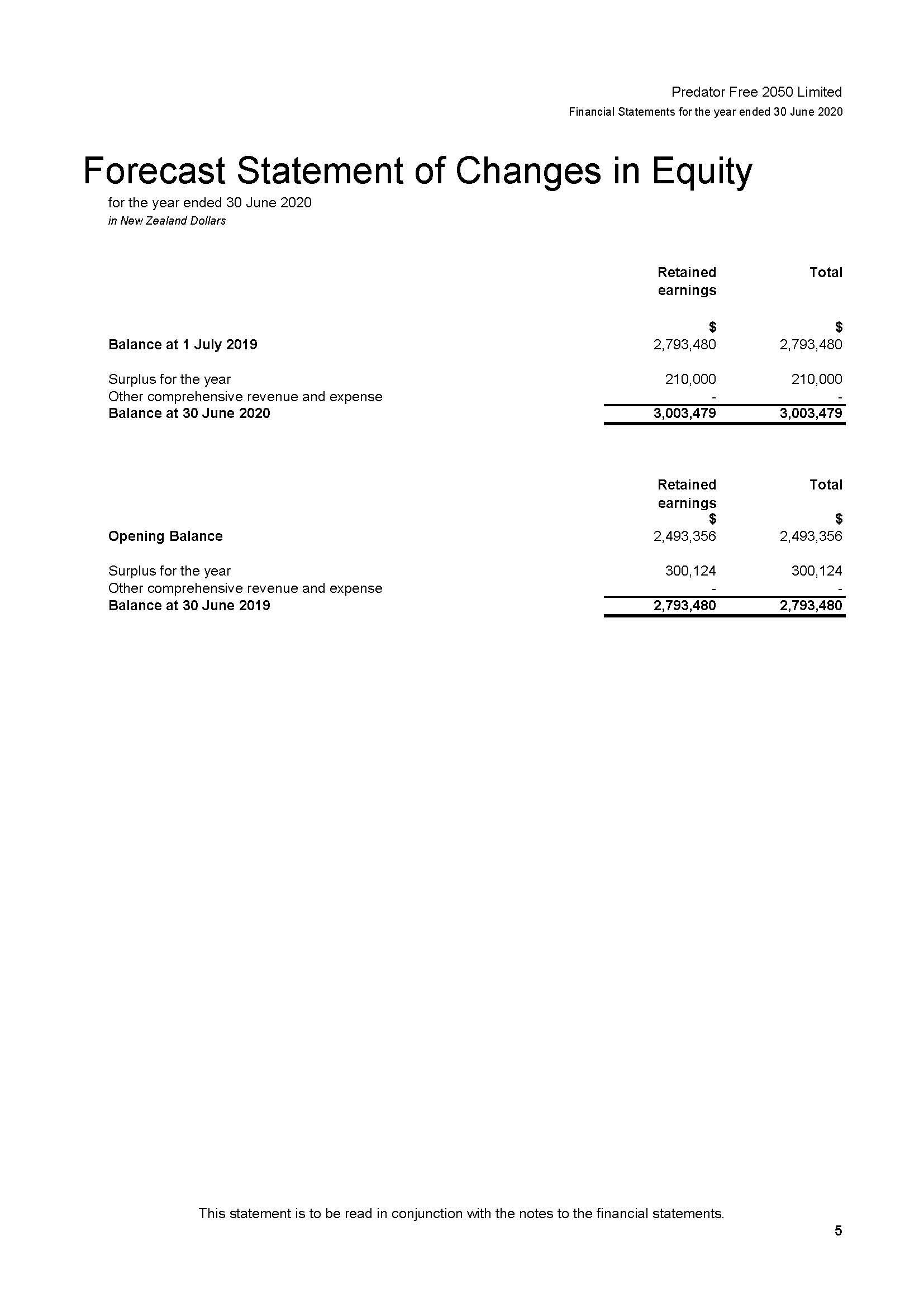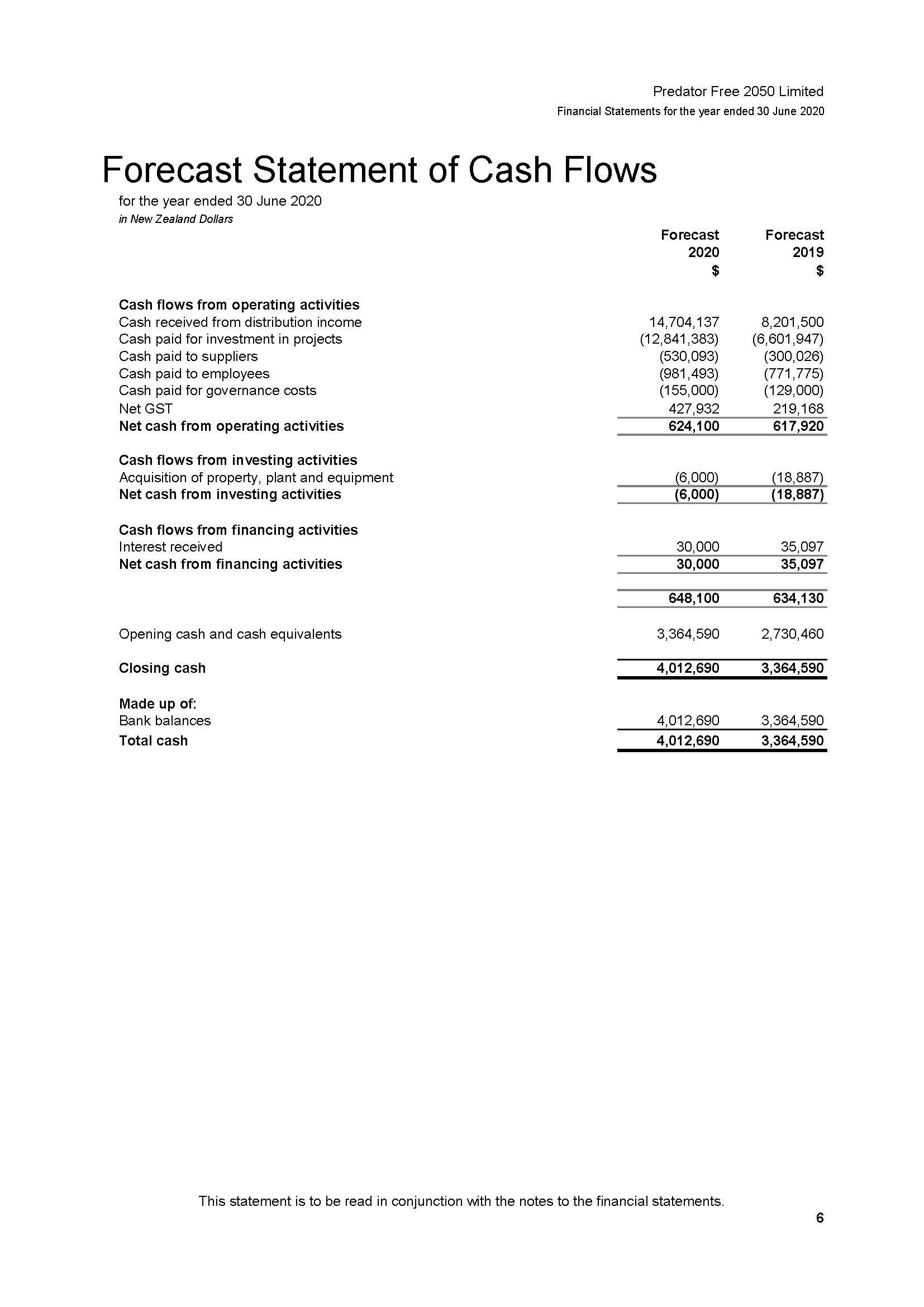PREDATOR FREE 2050 LIMITED


Statement of Performance Expectations
For Financial Year 2019-20

PREDATOR FREE 2050 LIMITED


Statement of Performance Expectations
For Financial Year 2019-20

This Statement of Performance Expectations (SPE) sets out the performance expected of Predator Free 2050 Limited for the period 1 July 2019 to 30 June 2020.
 Jane Taylor Chair
Jane Taylor Chair
Predator Free 2050 Limited was created in 2016 to make a significant contribution to the New Zealand government’s goal of eradicating possums, stoats and rats by 2050.
It is constituted as a Crown-owned company under Schedule 4A of the Public Finance Act 1989. It is registered under the Charities Act.
Predator Free 2050 Limited facilitates partnerships and co-funding arrangements that enable large landscape predator eradication operations and the breakthrough science needed to underpin them.
It currently receives funding through Vote Conservation and the Provincial Growth Fund.
Monitoring is provided through the Department of Conservation.
2019/20 will be Predator Free 2050 Limited’s third year of operational activity.
In 2016 Cabinet approved an allocation of $23.3m to the newly formed company for the period 201620, with outyear funding of $5.9m per annum
The expectation from shareholding ministers was that Predator Free 2050 Limited would invest around $4m in large landscape projects and $1m in science per annum and secure matching investment of $2 for every $1 of Crown investment.
The company’s first expression of interest process in 2017 showed widespread interest in participation and co-funding of coordinated large landscape predator eradication projects, with 45 applications received from groups representing six percent of mainland New Zealand
Seven projects were invited to submit full requests for proposals and after assessment against 13 established criteria the first co-funded project was launched in Taranaki in May 2018.
The first half of 2018/19 saw four more large landscape projects launched, in Hawke’s Bay, Wellington, Waiheke Island and Dunedin.
Overall, the projects enable 210,00ha to be brought under predator suppression and 42,300ha to be targeted for eradication of at least one predator species over the next four to seven years
The company’s investment of $23.2m into five large landscape projects to date is expected to leverage operational commitments of $66.5m, a ratio of 2.86:1, with 43% of project funding from councils.
The company is in discussion with a further large landscape project, on D’Urville Island, and has $1.6m of uncommitted funds available until 2023.
An average of 80 milestones and decision points are contained in contracts with entities delivering large landscape projects and are reviewed regularly within a quarterly monitoring and reporting cycle.
A first annual Project Coordination Workshop was held in March 2019 to strengthen sharing of knowledge between projects implemented and research providers.
In November 2017 a Research Strategy was published to guide the company’s $1m per annum investment in scientific research. By the end of the 2017/18 financial year contracts had been initiated
for seven co-funded research projects across all four programme areas defined in the strategy. A further eight research projects were contracted during 2018/19, with an overall leveraged co-funding ratio of 2.8:1
In 2019 the company secured a $19.5m grant from the Provincial Growth Fund to facilitate new large landscape projects in surge regions (for five-year terms) and accelerate investment in new predator eradication products (for delivery within three years)
A second call for expressions of interest in February 2019 for Surge Region and Products to Projects funding was again heavily over-subscribed. The company expects to have completed assessment and entered into negotiations with shortlisted project entities and providers by the end of 2018/19.
It has a small staff (6.8 FTEs) and contributes information, advice and, where appropriate, leadership to the network of agencies which share the Predator Free 2050 goal.
As part of the 2019 Budget process, Predator Free 2050 Limited showed that a three-fold increase in baseline funding would be required to meet current demand for participation, secure available cofunding, address identified research gaps and establish a project mobilisation rate able to reach all areas of the country by 2050.
The Statement of Performance Expectations is derived from the Statement of Intent which covers the four-year period from 1 July 2018.

This Statement of Performance Expectation describes activities and targets that will help deliver the outcomes described in the company’s Statement of Intent. Predator Free 2050 Limited will report on these activities and deliverables in its 2019/20 Annual Report.
Significant acceleration in the rate of increase of land under predator control.
Contribute to national 2025 targets: One million more hectares of mainland NZ where predators are suppressed.
Demonstrate predator eradication on at least 20,000 hectares of mainland NZ without use of fences.
Eradicate mammalian pests from NZ’s island nature reserves.
NEW SCIENCE
FAST-EVOLVING SCIENCE AND TECHNOLOGY
RESEARCH AND DEVELOPMENT FOR LANDSCAPE-SCALE PREDATOR ERADICATION.
Significant acceleration in developing a suite of solutions for landscapescale predator eradication.
Contribute to national 2025 target: Develop a breakthrough science solution to eradicate at least one small mammal predator from the NZ mainland.
Identify and assess landscape scale projects.
Attract investment from third parties.
OPPORTUNITY AREA OUTCOMES ACTIVITIES TARGET NEW LANDSCAPES FUND ERADICATION OF PREDATORS ON LARGE OFTEN PRIVATELY-OWNED LANDSCAPES AND DEFEND FROM REINVASION.
Develop an agreed monitoring and evaluation approach.
Advise project consortia on developing high quality, technically feasible projects.
Fund initial projects.
Ensure governance and resources are in place to support co-investment partners.
Develop a research and investment strategy with clear aims and priorities in collaboration with the Biological Heritage National Science Challenge.
Develop and fund projects in all priority research programmes.
Create a shared investment strategy with the Biological Heritage National Science Challenge to support long-term predator science research.
Attract investment from third parties.
Develop an agreed monitoring and evaluation framework.
NEW PARTNERS RECRUIT NEW PARTICIPANTS TO CONSERVATION INCLUDING THIRD PARTY FUNDERS, LANDOWNERS AND ORGANISATIONS TO ENGAGE IN PREDATOR CONTROL.
Enhanced collaboration across stakeholders, and co-investment by nongovernment agencies attracted
Increase opportunities for iwi to exercise kaitiakitanga over their rohe.
One new co-funded project through Vote Conservation funding contracted and launched
Est – 15,000 ha
$12m of PGF funding allocated to contracted projects
Est - 150,000 ha
Milestone and decision points agreed for new surge region projects
Measures to determine impact on regional development defined and included
Nine contracted large landscape projects complete quarterly monitoring and reporting cycle with 80% of agreed milestones met on time.
One Project Coordination Workshop hosted to facilitate exchange of knowledge.
2:1 co-funding ratio maintained across all large landscape projects.
Health and Safety incidents monitored quarterly across all projects.
$1m of Vote Conservation funding allocated to research programme areas defined in Research Strategy
80% of research projects deliver specified research outputs on time
2:1 co-funding ratio across all Vote Conservation funded research projects.
$6.5m of PGF funding allocated to Products to Projects funding.
Five new products available for field use.
Products to Project announcements and launches widely promoted
80% of Products to Projects milestones met within reporting cycle.
Data standards plan issued for project review and reference.
Guidance on detection design for eradication and calculation of proof of eradication issued for project use.
Inter-agency science collaboration process coordinated (to support Predator Free 2050 Strategic Plan and Biological Heritage National Science Challenge direction) within the year
IUCN Taskforce on Biodiversity Conservation and Synthetic Biology membership obligations met.
Three presentations to apex national and international science forums.
10 field visits and meetings held to incubate interest from prospective project initiators and contributors.
20 pipeline projects, capable of being investment ready within 2-3 years maintained on a list for future funding.
CEO and board level contact maintained twice per year with Department of Conservation, the Predator Free New Zealand Trust, OSPRI and Biological Heritage National Science Challenge
Iwi participation in projects confirmed and barriers to participation considered in all project monitoring cycle meetings.
Contact initiated with EPA and MPI re processes and approvals for new products.
Contact initiated with key contractors in regions re capacity needs and roadblocks.
Website and social media presence maintained, with six new blogs and six news releases posted.
Roadshow undertaken with 10 key philanthropic organisations to consolidate investment into Predator Free 2050 projects.
Company Health and Safety achieves zero harm over 12 months
The forecast financial statements below include a forecast Statement of Comprehensive Revenue and Expenses, Statement of Financial Position, Statement of Changes in Equity and Statement of Cash Flows for the 2020 financial year.
These financial statements have been developed for the purpose of fulfilling Predator Free 2050 Limited’s obligation, under the Crown Entities Act 2004, to prepare a Statement of Performance Expectations for Ministers and to publish online. The forecast financial statements are based on estimates and assumptions. Actual financial results achieved for the forecast period are likely to vary from information presented and variations may be material.
The statements have been prepared on a going-concern basis.
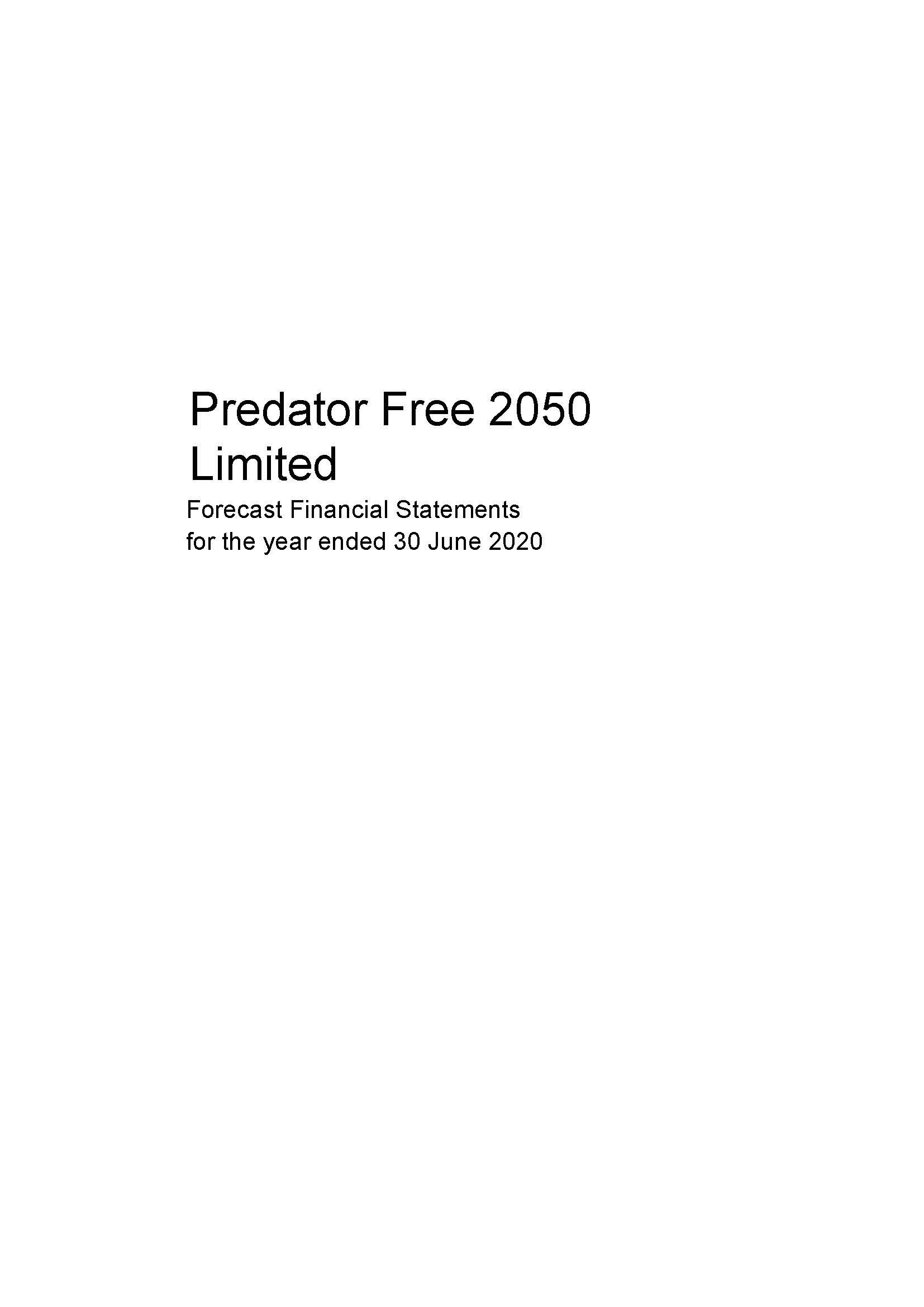
FORECAST FINANCIAL STATEMENTS
FORECAST FINANCIAL STATEMENTS
